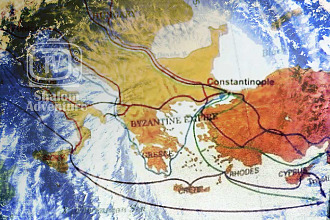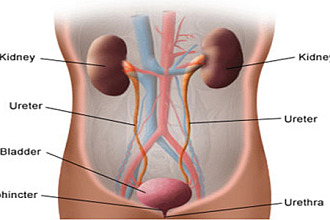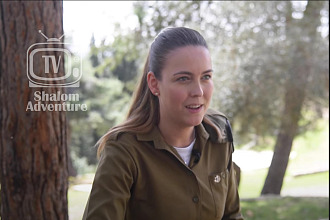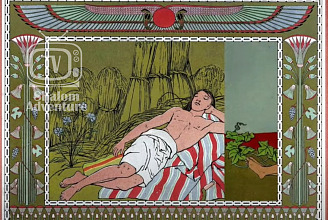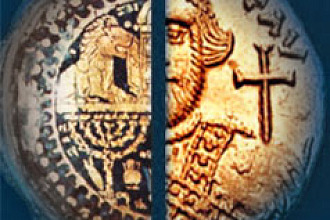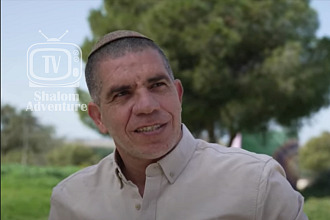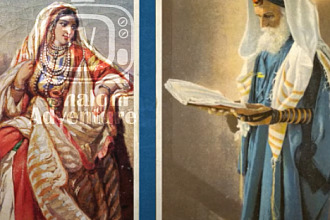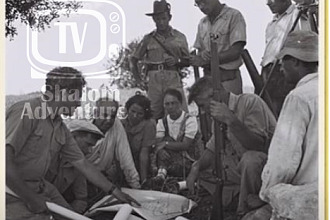On June 15, 1970, a group of Soviet dissidents gathered at Smolny Airport outside Leningrad. They had bought all the seats on a 12-passenger aircraft headed 240 miles northwest to Priozersk, near the Finnish border. Upon landing, they intended to hijack the plane, deposit the crew in a nearby forest, and fly to Sweden, where they would hold a press conference to call attention to the plight of Soviet Jewry. They would then
Ten of them were Jews. One, 22-year-old Yosef Mendelevich, had applied for a visa to immigrate to Israel three times and been rejected three times. Another dissident, Sylva Zalmanson, later told the magazine Novoe Russkoe Slovo that the travelers were terrified by the prospect of punishment but felt almost possessed, as if beckoned by magical powers: They had made their decision against Soviet life, and attempting escape was the only course. Two of the dissidents were Christians. One of them, Yuri Fedorov, had already served three years in labor camps for circulating anti-regime literature.
But the samoletchiki ("airplane guys"), as they came to be known, never made it to the plane. Heading toward the tarmac, they were tackled, beaten, and arrested by KGB officers. They did not see each other for the next six months, as the KGB attempted to wear them down and extract confessions. In December 1970, they were all found guilty of treason for attempting to leave the country illegally.
Most of the group received sentences of four to 15 years. But Eduard Kuznetsov, the leader of the group, and Mark Dymshits, the intended pilot, were sentenced to death by firing squad. After world outcry, the death sentences were commuted to 15 years in the gulag.
The samoletchiki said they did not regret their actions. In the 2007 documentary Refusenik, Mendelevich described a moment of uncertainty after the arrest, asking himself, "You admit that it was a stupid thing to do? Now you are a prisoner. Everything is lost!" But the moment was brief. He had been willing to sacrifice his life for the right to live in Israel. Now he knew his love for the country was real.
Another member of the group, Anatoli Altman, did not regret a day of the nine years he spent in a labor camp. Every morning he woke to the monotony and suffering of gulag life. But he knew that each time he let his guard down, the camp re-education system, designed to break him as an individual, would come one step closer to transforming him into another interchangeable Soviet chattel, Homo sovieticus. "I was put in a position," he remembered, "where I was forced to make choices. Would I keep my human dignity, my personal dignity? I discovered inner strengths I didn't know I had."
Still another of the group, Boris Penson, a 24-year-old graduate of the Academy of Arts in Riga, spent nine years in Soviet prison camps. His friends were able to smuggle some of his art to Israel. Thus, in 1972, while he was serving his term, New York's Jewish Museum showcased his work in an exhibit called "Art from a Soviet Prison." Reflecting on his ordeal, Penson affirmed that "freedom was worth it," especially for the people who were able to reach Israel because of him.
At the time of the aircraft arrests, Boris Gorbis, who later founded the America-Israel Museum in Los Angeles, was completing his last year at Odessa University. There were rumors about the hijacking, but the first official news of it appeared in Izvestia only in early 1971. After the trial, the KGB prepared for more arrests and interrogations. Memories of the 1952-1953 "Doctors' Plot," an anti-Semitic show trial, weighed heavily on the minds of Soviet Jews.
But as news of the prosecutions spread, the Soviet Union came under international scrutiny. Within a month of the trial, people started receiving permission to emigrate. In 1971, 13,000 exit visas were granted; in 1972 there were 32,000. The flow would prove temporary, but world opinion had forced the Soviets to make a show of granting exit visas. The invincible regime had been set back. In May, 1971, Gorbis began applying for permission to leave the Soviet Union.
In April, 1979, five of the samoletchiki finally arrived in Israel, greeted with a celebration at Ben Gurion Airport. Altman, by then 38, remembered the shock of arriving in Tel Aviv, still sporting his short prison haircut, and being received as a hero. When it was time for him to address the crowd, he was unable to speak. It suddenly dawned on him that he was standing at the doorstep to the land of Israel, from which his ancestors had been driven 2000 years ago. Now, he was returning; the circle was complete.
Dymshits and Kuznetsov were freed in May, 1979 as part of a U.S.-Soviet swap of five Soviet dissidents for two Soviet spies. Yuri Fedorov, the last to be released, spent a total of 18 years in prison camps; he arrived in the United States in 1988. He visited Russia in 1998 and discovered that thousands of former dissidents were suffering from poverty and disease. The Free World had forgotten the individuals who had sacrificed their lives and health to bring about the collapse of the Soviet Union. Fedorov returned to the United States and established the Gratitude Fund, which raises money to provide the former dissidents with medical and emergency assistance.
The samoletchiki awakened the world to the desperate plight of Soviet Jewry. No longer could the West attribute the absence of protest in the Soviet Union to satisfaction with the regime; here were individuals so desperate to escape that they were willing to undertake a mission in which capture was almost certain. They understood that there could be no Jewish life in the Soviet Union and pursued liberation knowing that their path might well lead them to the gulag. "Americans need to hear," Fedorov drew the lesson, "that in every country and in every nation, freedom is not free." The noise the samoletchiki made reverberated throughout the world, proclaiming that Soviet Jewry would neither be forgotten nor silenced until freedom was theirs.
Originally from here
Posted on Shalom Adventure by: Jeff Zaremsky




